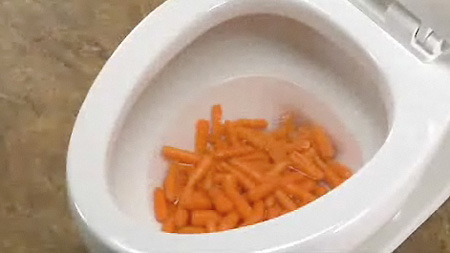Is it Suitable to Dispose of Food in the Toilet?
Is it Suitable to Dispose of Food in the Toilet?
Blog Article
Just about every person maintains their own piece of advice when it comes to What Can Happen If You Flush Food Down the Toilet?.

Introduction
Many people are usually confronted with the problem of what to do with food waste, especially when it involves leftovers or scraps. One typical question that emerges is whether it's okay to flush food down the bathroom. In this article, we'll delve into the reasons people might take into consideration purging food, the effects of doing so, and alternate approaches for correct disposal.
Reasons why individuals may think about flushing food
Absence of understanding
Some individuals may not recognize the prospective harm caused by flushing food down the toilet. They might incorrectly think that it's a safe method.
Convenience
Purging food down the bathroom may look like a quick and very easy option to taking care of undesirable scraps, especially when there's no close-by trash can available.
Laziness
Sometimes, people may merely pick to flush food out of sheer idleness, without taking into consideration the effects of their activities.
Effects of flushing food down the toilet
Ecological impact
Food waste that winds up in rivers can contribute to air pollution and injury aquatic ecosystems. Additionally, the water made use of to purge food can stress water resources.
Pipes concerns
Flushing food can lead to blocked pipes and drains, triggering pricey pipes fixings and aggravations.
Kinds of food that need to not be purged
Coarse foods
Foods with coarse appearances such as celery or corn husks can obtain entangled in pipes and cause obstructions.
Starchy foods
Starchy foods like pasta and rice can absorb water and swell, resulting in blockages in pipelines.
Oils and fats
Greasy foods like bacon or food preparation oils need to never be flushed down the commode as they can solidify and trigger blockages.
Appropriate disposal approaches for food waste
Utilizing a waste disposal unit
For homes geared up with waste disposal unit, food scraps can be ground up and purged through the plumbing system. Nevertheless, not all foods are suitable for disposal in this way.
Recycling
Particular food packaging products can be recycled, decreasing waste and minimizing ecological effect.
Composting
Composting is an environmentally friendly method to dispose of food waste. Organic products can be composted and used to enrich soil for gardening.
The importance of proper waste management
Lowering environmental damage
Proper waste administration methods, such as composting and recycling, aid lessen pollution and protect natural deposits for future generations.
Safeguarding pipes systems
By avoiding the method of flushing food down the toilet, homeowners can avoid expensive plumbing repair work and maintain the integrity of their pipes systems.
Conclusion
In conclusion, while it might be appealing to purge food down the commode for comfort, it is essential to comprehend the prospective effects of this action. By adopting correct waste monitoring techniques and dealing with food waste properly, individuals can contribute to healthier pipes systems and a cleaner setting for all.
FLUSH FOOD DOWN THE TOILET?
FLUSHING FOOD CAN CAUSE BLOCKED DRAINS IN YOUR HOME
All of the plumbing fixtures in your home are connected to the same sewer pipe outside of your home. This outdoor sewer pipe is responsible for transporting all the wastewater from your home to the Council sewer mains. Even small pieces of food that go down the kitchen sink can cause problems for your sewer. It should therefore be obvious that flushing larger bits of food, such as meat, risks a clog in either the toilet itself or the sewer pipes. Flushing greasy food is even more problematic because oil coagulates when it cools, coating the interior lining of your pipes.
THE TOILET IS NOT A BIN
Food isn’t the only thing that people shouldn’t be flushing down the toilet. People use the toilet to dispose of all kinds of things such as tampons, makeup wipes, dental floss, kitty litter and even underwear. Water goes to great lengths to educate residents about the high costs and stress placed on wastewater treatment systems simply from people flushing the wrong stuff down the toilet. It costs taxpayers millions of dollars each year, and homeowners thousands in blocked drain repairs.
FLUSHING FOOD IS A WASTE OF WATER
Flushing food is a waste of our most precious resource - water. In June this year Level 1 water restrictions were introduced to protect water supply from drought conditions. Much of New South Wales continues to be affected by prolonged drought with recent figures revealing up to 97 per cent of the state remains in drought. Depending on whether you have a single or dual flush toilet, every single flush uses between five and 11 litres of water. In the current climate this is a huge amount of water to be wasting on flushing food that should be placed in the bin (or better yet, the compost).
https://www.jabplumbingsolutions.com.au/blog/can-you-flush-food-down-the-toilet

As a keen person who reads on Think Twice Before Flushing Food Down Your Toilet, I figured sharing that excerpt was worthwhile. For those who appreciated our blog entry kindly be sure to share it. I praise you for being here. Don't forget to come by our blog back soon.
Schedule Appointment Report this page